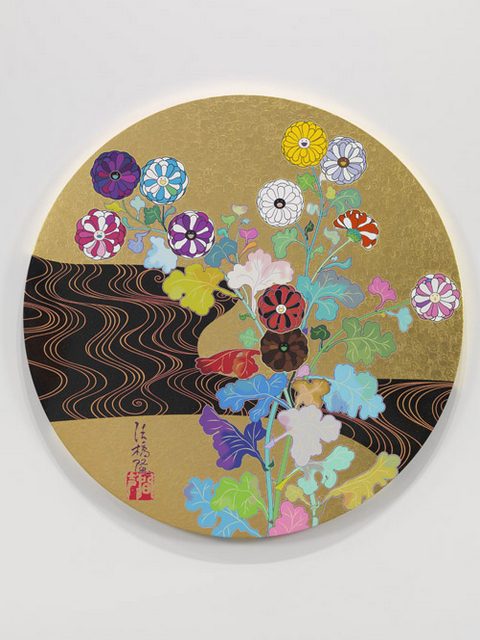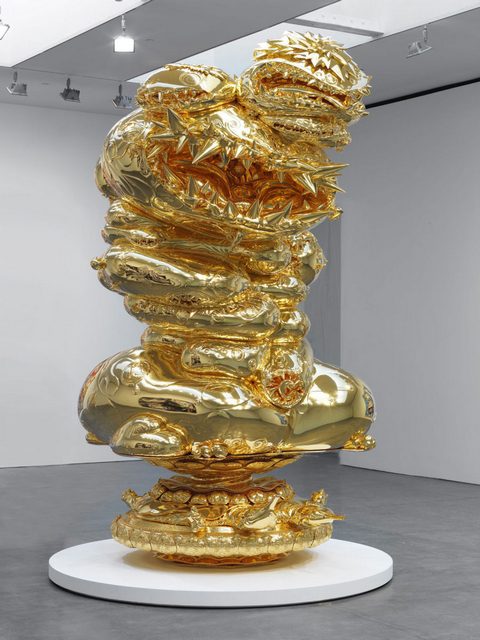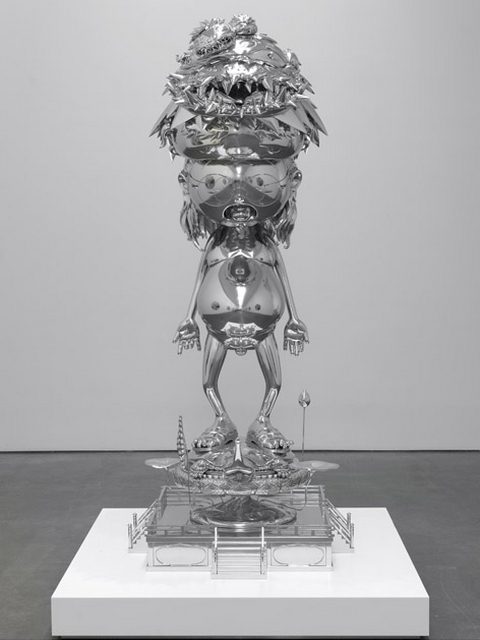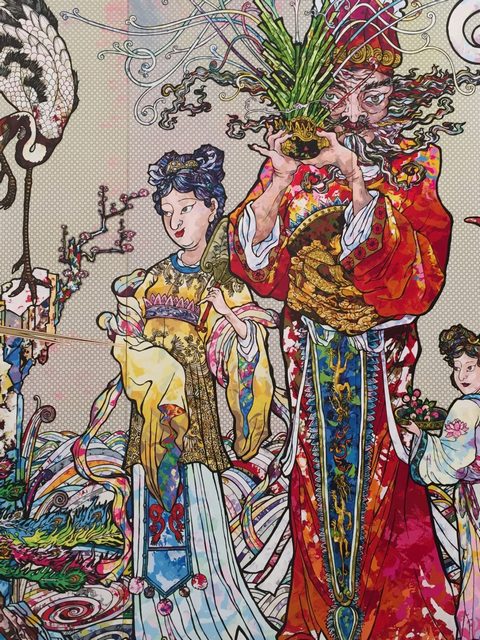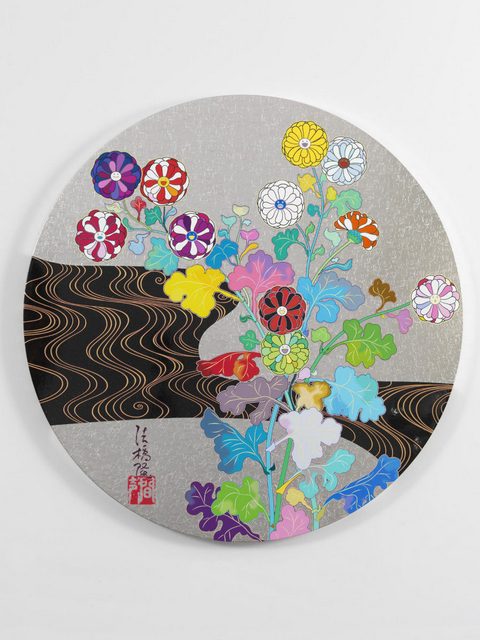ART CITIES:N.York-Takashi Murakami
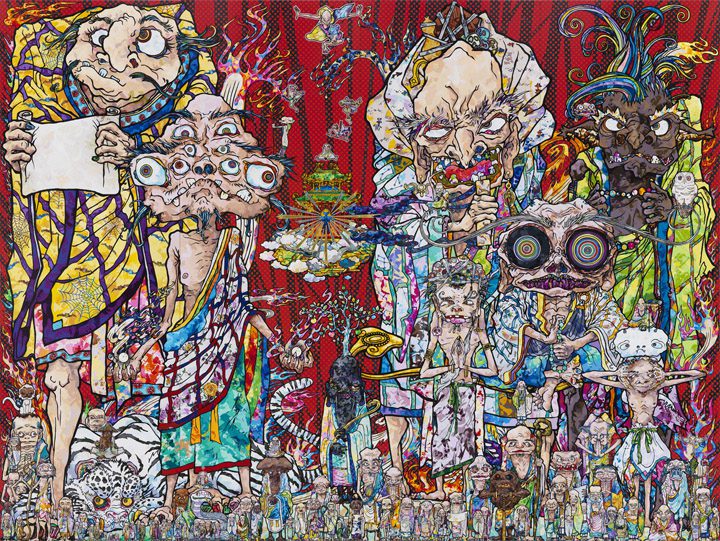 “To me, religions are a narrative…Natural catastrophes, earthquakes, are things caused by nature. Such chaos is natural, but we have to make sense of it somehow, and so we had to invent these stories. That is what I wanted to paint.” Takashi Murakami
“To me, religions are a narrative…Natural catastrophes, earthquakes, are things caused by nature. Such chaos is natural, but we have to make sense of it somehow, and so we had to invent these stories. That is what I wanted to paint.” Takashi Murakami
By Dimitris Lempesis
Photo: Gagosian Gallery Archive
Reflecting on how Japanese society traditionally turned to religion for consolation in times of turmoil, for example, in the aftermath of the Great Asei Edo Earthquake of 1855, painters such as Kano Kazunobu portrayed the 500 Arhats, the spiritual protectors of the Buddha’s teachings, as stewards of enlightenment in dire times. Murakami revisited the legend of the Arhats, 500 monks who deferred their own Buddhahood in order to provide guidance and enlightenment to the common people. This exhibition is a visual translation of the experience of a world that could be in the aftermath of the Great Tohoku Earthquake of 2011. In the past, numerous artists were moved to create artwork to explain and rationalize natural disasters and often pointed towards spiritual or religious storyline as explanation, much of which is passed down in myth and lore. Murakami gives an artistic take on a new religion and viewpoint stemming from the 2011 aftermath through his long vocal cultural dichotomy of ancient vs. modern and oriental vs. occidental. Murakami believes the artist to be one who perceives and limns the borders between worlds. Combining classical techniques with the latest technologies, he moves freely within an ever-expanding field of aesthetic issues and cultural inspirations. Parallel to the dystopian themes that pervade his work, he recollects and revitalizes traditional narratives of transcendence and enlightenment. Mining religious and secular subjects favored by the so-called Japanese “eccentrics” or non-conformist artists of the Early Modern era commonly considered to be counterparts of the Western Romantic tradition, Murakami situates himself within their legacy of bold and lively individualism in a manner that is entirely his own and of his time. Murakami has created an immersive installation, entered through a 56-ton replica of a sanmon (sacred gate), of eclectic arhats; Here is a contemporary belief system, constructed in the wake of disaster, that merges earlier faiths, myths, and images into a syncretic spirituality of the artist’s imagination. In totemic sculptures representing demons, religious sites, and self-portraits; and paintings that conflate classical Japanese techniques with Abstract Expressionist tropes, science fiction, manga, and Buddhist and Shinto imagery, Murakami investigates the role of faith amid the inexorable transience and trauma of existence.
Info: Gagosian Gallery, 555 West 24th Street, New York, Duration: 10/11/14-17/1/15, Days & Hours: Tue-Sat: 10:00-18:00, www.gagosian.com
